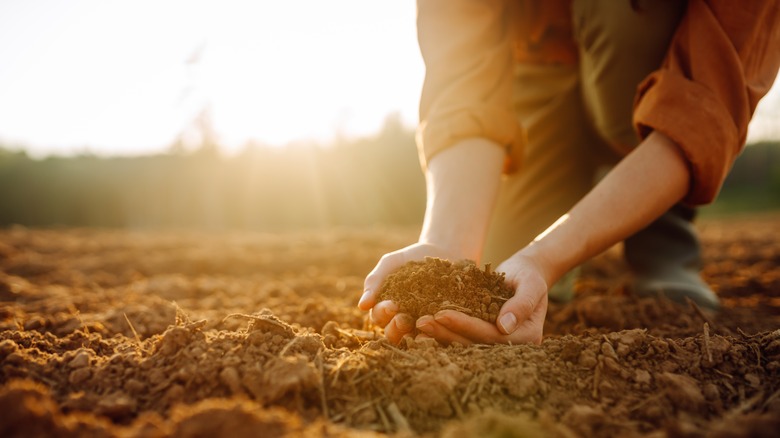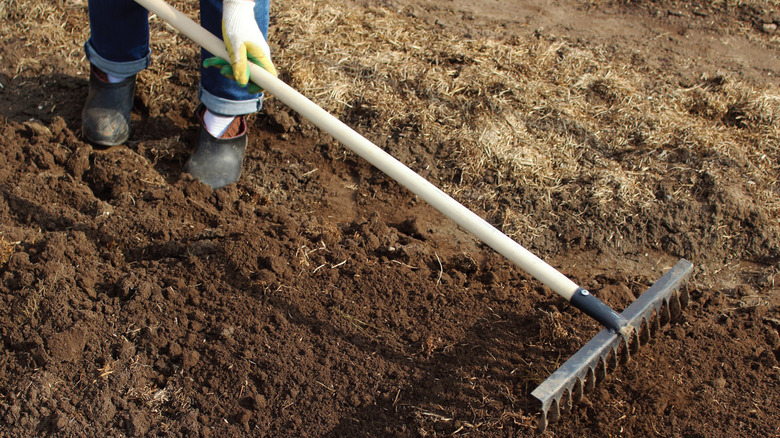The Essential Fall Gardening Task For Healthier Soil In The Spring
At summer's end, many homeowners assume that their gardening work is done until next spring. However, if you want healthy soil and a yard full of thriving plants once the weather warms up again, there's actually a fall to-do list for the garden of your dreams. Some of these necessary chores are fairly obvious, such as removing weeds, dead branches, and other debris, testing the soil to determine its nutrient levels, and top dressing the soil with compost or other organic matter. But there is one task that often gets overlooked: raking the soil flat for the upcoming winter weather.
Leveling garden soil in the fall is a crucial step because water can pool in uneven areas and leave other spots dry. Poorly drained soil puts plants at risk for fungal growth and disease. When temperatures drop, the pooled water can also freeze. As it expands, it divides the soil into further layers, which can leave your garden beds even more uneven in the spring. Uneven garden beds are also at greater risk of soil erosion because wet winter weather can wash away topsoil particles that aren't in a solid layer.
Raking the soil not only levels it, though. It also helps break down large clumps and remove debris that might inhibit your plants' growth. Fall is the ideal time to do it, too, because the soil is still warm enough to move easily. You won't have trouble incorporating topdressing to fill in low spots, either.
Here's how to rake and level your garden soil in the fall
Before you begin raking your garden beds, it's important to have the right tool for the job. As its name implies, a rake is an essential gardening tool and the best choice for raking soil to break up clumps, remove rocks and other debris, and level your beds. It is typically made of metal, such as steel, and its short, stiff tines dig into the soil to move it effectively.
Start raking by removing soil clumps, rocks, and any other debris to make leveling your garden beds easier. When you're confident that there are no items in the soil to get in the way, use the rake to smooth the soil into as even a layer as you can, taking special care to lower higher areas of soil by spreading it across the beds. To determine how level the soil really is, it helps to take a step back to assess its evenness. In particular, look for any low spots that still remain.
A smart tip for leveling your backyard that works especially well for garden beds is spot leveling. It involves filling in low areas in your garden beds with topsoil, sand, compost, or a topdressing mix of topsoil with sand or compost. Add your chosen material slowly, though, to avoid overfilling the area. When the spots are filled, use the rake again to smooth the topdressing material and level the area a final time.

